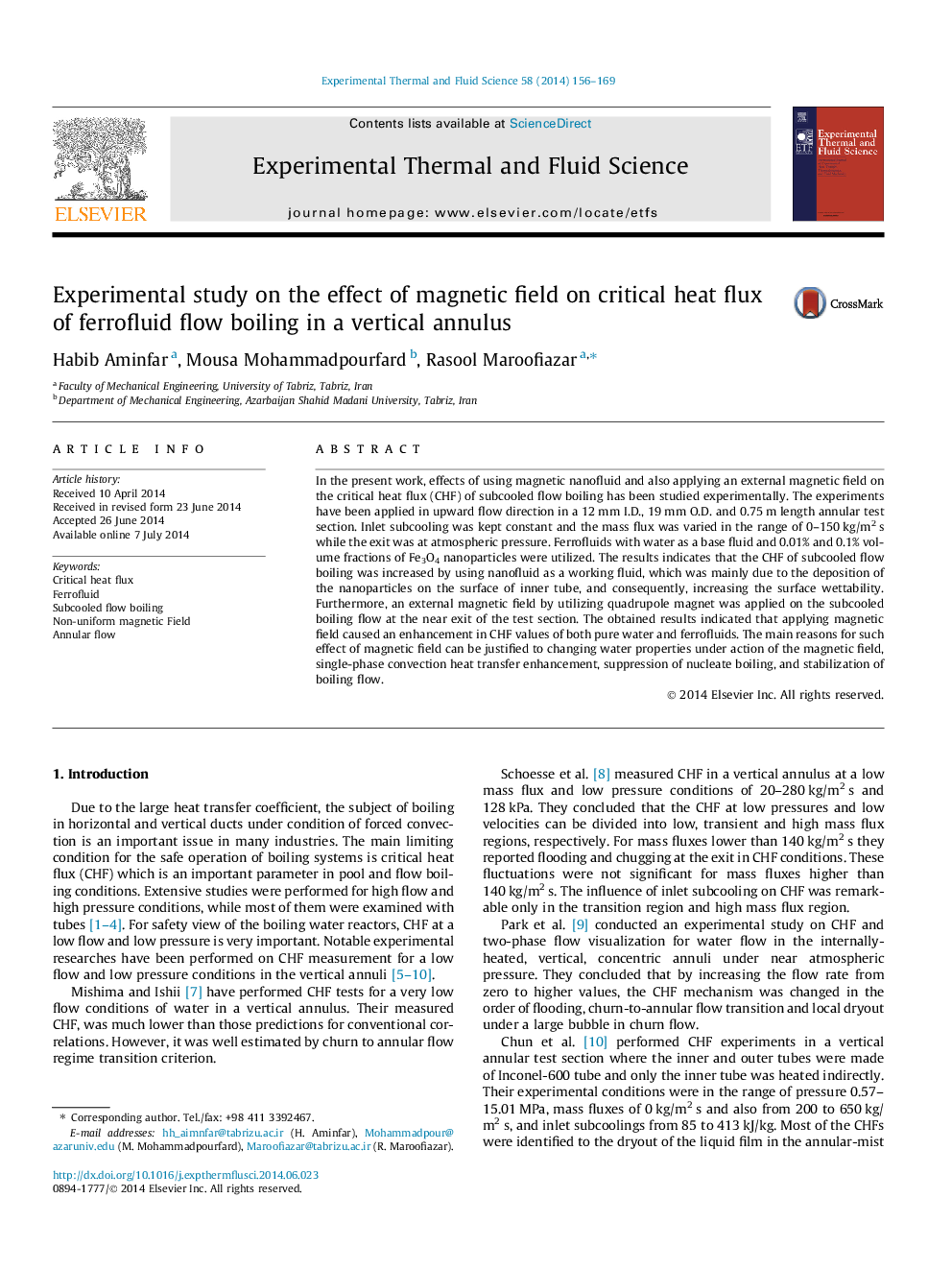| Article ID | Journal | Published Year | Pages | File Type |
|---|---|---|---|---|
| 651437 | Experimental Thermal and Fluid Science | 2014 | 14 Pages |
Abstract
In the present work, effects of using magnetic nanofluid and also applying an external magnetic field on the critical heat flux (CHF) of subcooled flow boiling has been studied experimentally. The experiments have been applied in upward flow direction in a 12Â mm I.D., 19Â mm O.D. and 0.75Â m length annular test section. Inlet subcooling was kept constant and the mass flux was varied in the range of 0-150Â kg/m2Â s while the exit was at atmospheric pressure. Ferrofluids with water as a base fluid and 0.01% and 0.1% volume fractions of Fe3O4 nanoparticles were utilized. The results indicates that the CHF of subcooled flow boiling was increased by using nanofluid as a working fluid, which was mainly due to the deposition of the nanoparticles on the surface of inner tube, and consequently, increasing the surface wettability. Furthermore, an external magnetic field by utilizing quadrupole magnet was applied on the subcooled boiling flow at the near exit of the test section. The obtained results indicated that applying magnetic field caused an enhancement in CHF values of both pure water and ferrofluids. The main reasons for such effect of magnetic field can be justified to changing water properties under action of the magnetic field, single-phase convection heat transfer enhancement, suppression of nucleate boiling, and stabilization of boiling flow.
Related Topics
Physical Sciences and Engineering
Chemical Engineering
Fluid Flow and Transfer Processes
Authors
Habib Aminfar, Mousa Mohammadpourfard, Rasool Maroofiazar,
